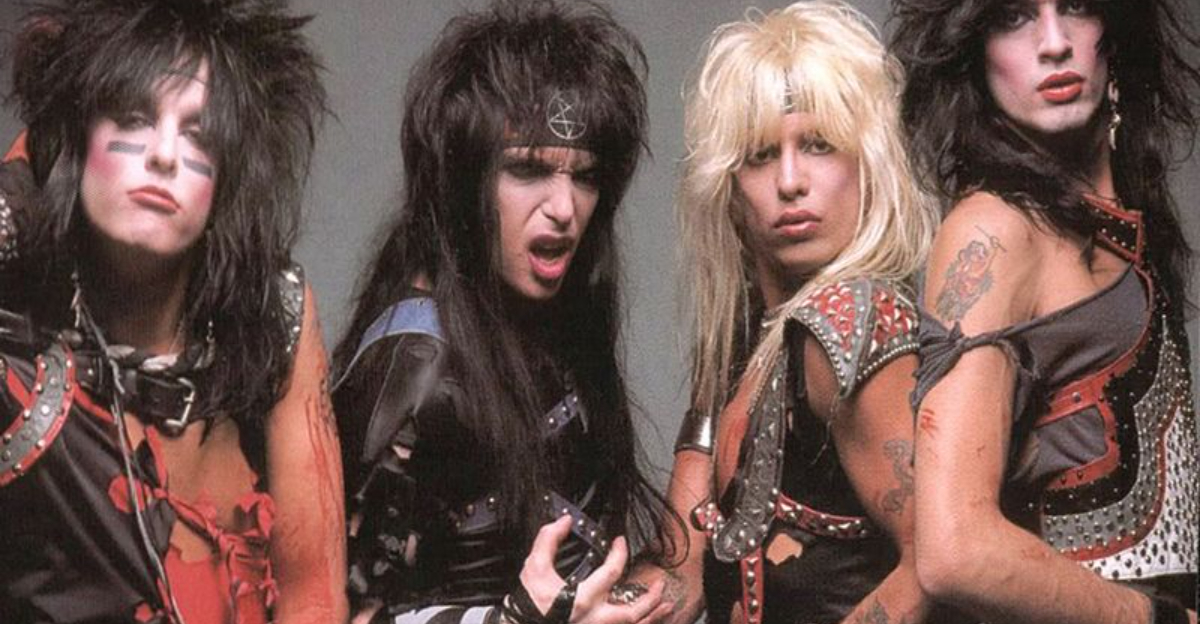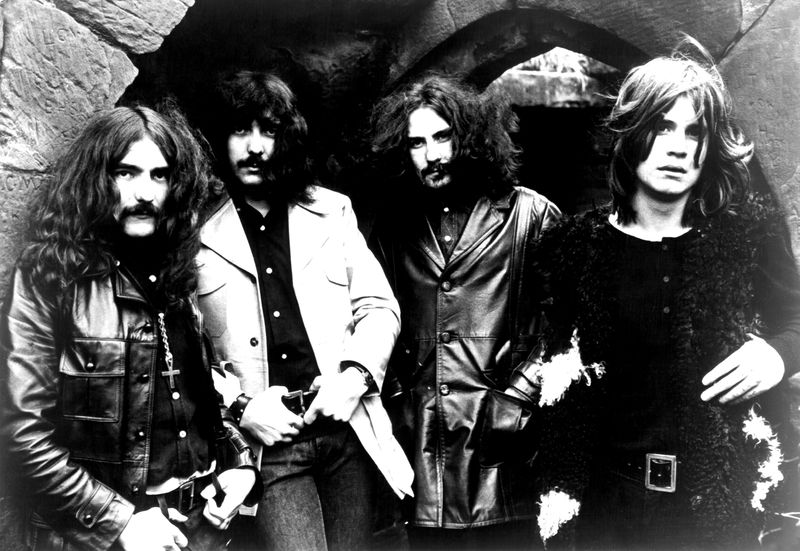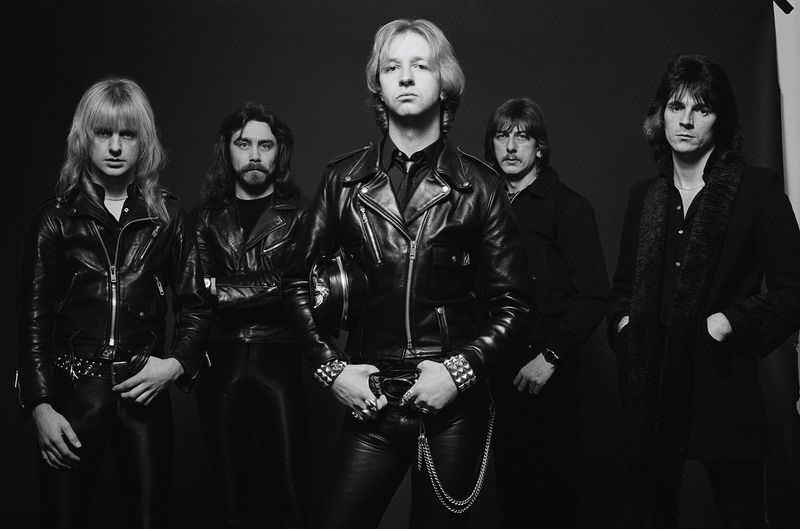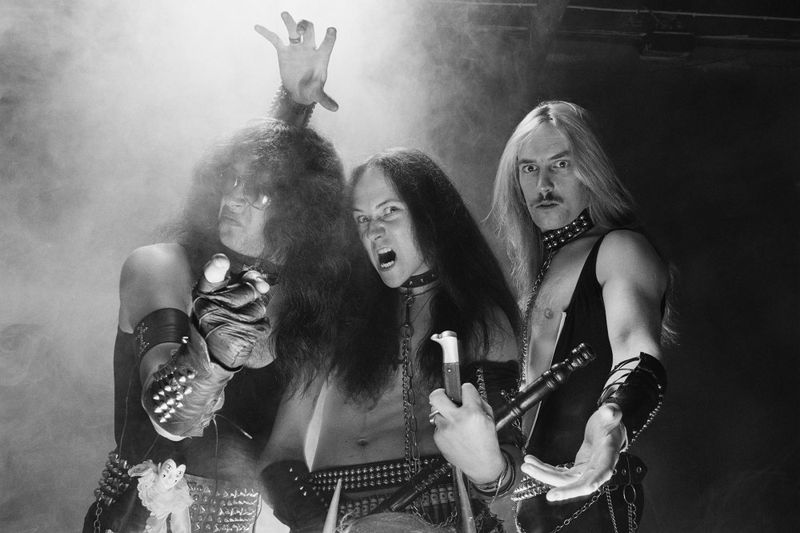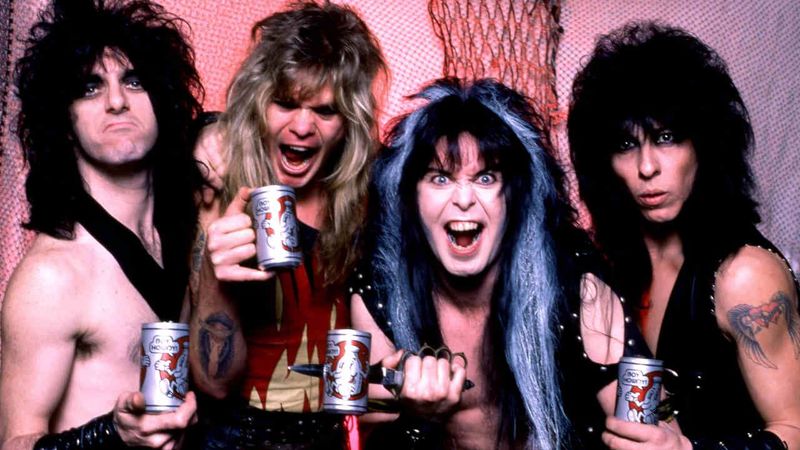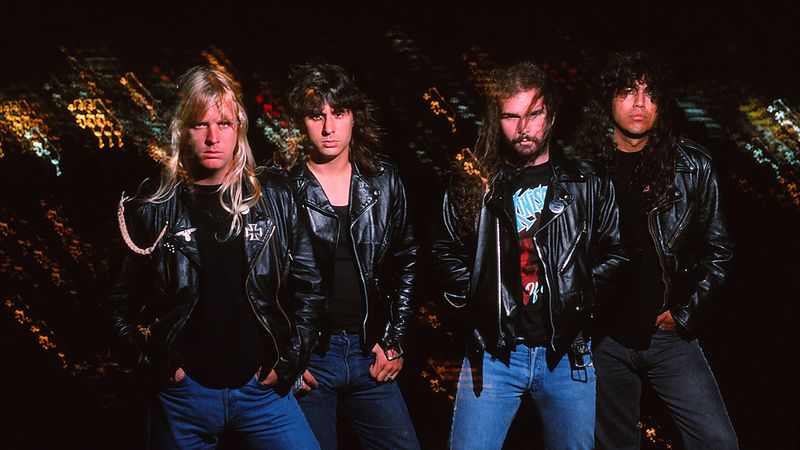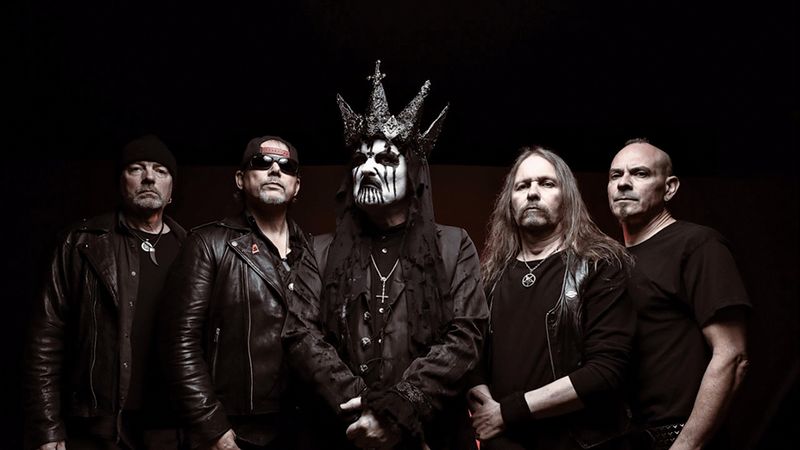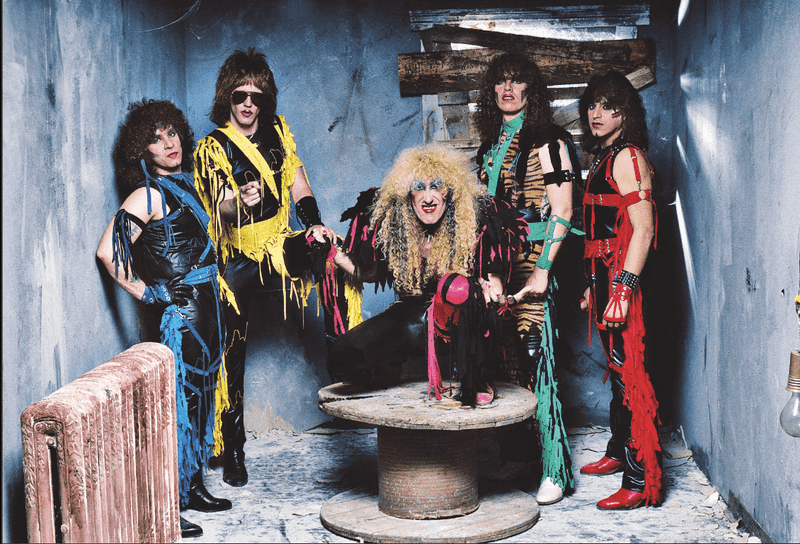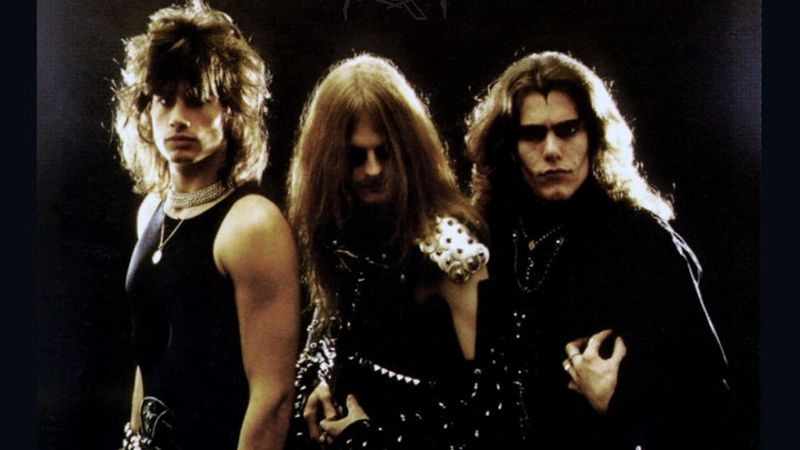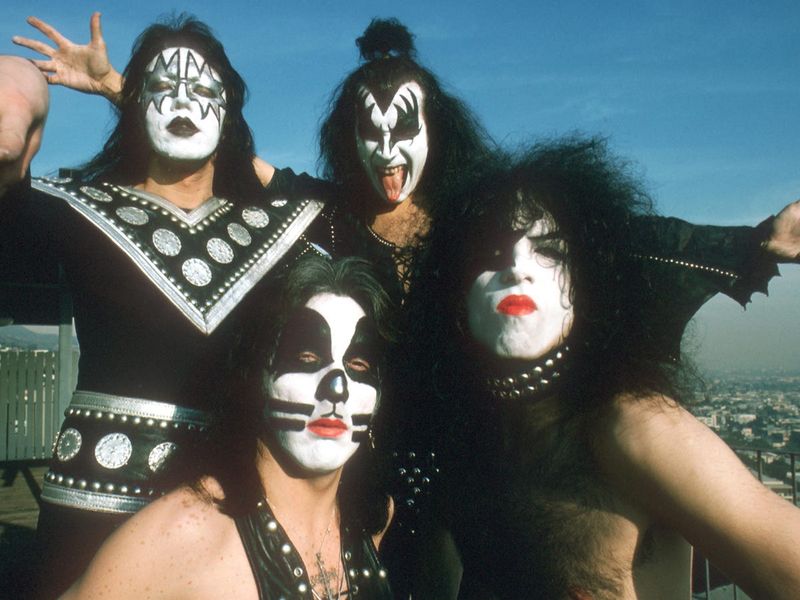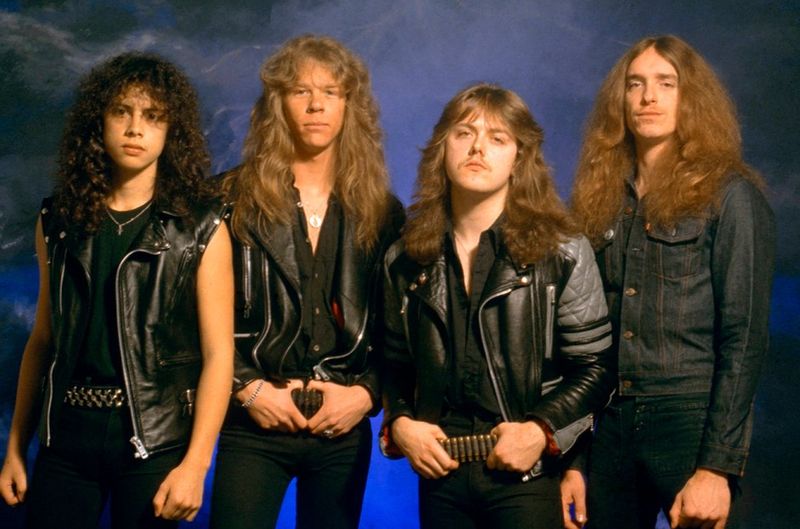The 1980s was the golden age of heavy metal, but it was also the era of ‘Satanic Panic’ and parental concern about music’s influence on teens. Metal bands with their loud guitars, scary album covers, and rebellious messages became the perfect villains for worried parents and religious groups. These 15 bands caused the most controversy, often becoming household names for all the wrong reasons.
1. Black Sabbath
Often considered the founding fathers of heavy metal, Black Sabbath struck fear into parents’ hearts with their occult imagery and doom-laden sound. Their self-titled song with its menacing tritone—nicknamed ‘the devil’s interval’—had parents convinced their children were dabbling in dark arts.
Frontman Ozzy Osbourne’s wild persona didn’t help matters. The band’s name itself, taken from a Boris Karloff horror film, suggested unholy alliances to concerned adults.
Songs like “N.I.B.” (rumored to stand for Nativity in Black) and “War Pigs” gave conservative parents ammunition in their fight against this new, threatening music that seemed designed to corrupt innocent youth.
2. Judas Priest
With their twin-guitar attack and Rob Halford’s operatic vocals, Judas Priest embodied the leather-and-studs aesthetic that defined heavy metal. Parents were horrified by Halford’s intimidating stage presence and the band’s rebellious anthems like “Breaking the Law” and “Living After Midnight.”
The moral panic reached its peak in 1990 when the band faced a lawsuit claiming their subliminal messages drove two young fans to attempt suicide. Though the case was dismissed, the damage to their reputation was already done.
Conservative groups circulated warnings about the band’s supposed satanic influences, despite the fact that most of their lyrics dealt with fairly standard rock themes of freedom and rebellion.
3. Iron Maiden
Nothing sent parents into a frenzy quite like Iron Maiden’s mascot Eddie—a grotesque zombie figure who adorned all their album covers. The British heavy metal pioneers became poster children for parental concerns, despite their lyrics often being based on literature, history, and mythology.
Albums like “The Number of the Beast” were burned at church-sponsored events. Parents completely missed that the title track was actually about a nightmare, not devil worship.
The band’s elaborate stage shows featuring a giant Eddie monster terrified parents who believed such imagery would corrupt their children’s minds. Meanwhile, teenagers couldn’t get enough of the band’s epic storytelling and technical brilliance.
4. Mötley Crüe
The bad boys of the Sunset Strip embodied every parent’s nightmare. Their teased hair, makeup, and revealing clothing challenged gender norms, while their lyrics celebrated sex, drugs, and rebellion without apology.
MTV embraced the band, bringing songs like “Girls, Girls, Girls” and “Looks That Kill” directly into family living rooms. Parents were appalled by their openly hedonistic lifestyle and the barely-concealed drug references in their music.
The band members’ frequent arrests, overdoses, and car accidents only reinforced their dangerous reputation. For teens, this only made them more appealing—these were rock stars living without rules, the ultimate symbol of freedom from parental control.
5. Venom
British trio Venom took metal to frightening new extremes with their raw, unpolished sound and explicitly satanic imagery. Their albums “Welcome to Hell” and “Black Metal” featured pentagrams and demonic imagery that seemed designed specifically to terrify parents and religious leaders.
Song titles like “In League with Satan” and “Possessed” left little to the imagination. The band embraced their role as metal’s ultimate bogeymen, even if their satanic posturing was largely theatrical.
Parents were convinced Venom were actual devil worshippers corrupting youth through their music. The band’s noisy, chaotic sound and low-budget production only added to their forbidden appeal for teenagers seeking something that would truly shock their elders.
6. W.A.S.P.
Few bands generated more outrage than W.A.S.P., led by shock-rock mastermind Blackie Lawless. Their stage shows featured raw meat throwing, drinking blood from skulls, and semi-nude models being tortured on stage—a perfect storm of parental nightmares.
Their song “Animal (F**k Like a Beast)” was specifically targeted by the Parents Music Resource Center (PMRC) as one of the “Filthy Fifteen” songs deserving warning labels. The controversy made W.A.S.P. household names and propelled them to greater fame.
Lawless’s saw blade codpiece became an iconic symbol of metal excess. Despite the theatrical nature of their act, many parents genuinely believed W.A.S.P. represented a moral threat to America’s youth.
7. Slayer
No band embraced the dark side of metal more completely than Slayer. Their lightning-fast music and lyrics about serial killers, warfare, and the occult made them the ultimate forbidden fruit for metal-loving teens.
Albums like “Reign in Blood” and songs such as “Angel of Death” (about Nazi doctor Josef Mengele) crossed lines that even other metal bands wouldn’t approach. Their pentagram logo and aggressive eagle symbol became shorthand for metal extremity.
Parents and religious groups were convinced Slayer members were actual satanists. The band never bothered to deny these accusations, understanding that their terrifying reputation was part of their appeal to fans seeking the most extreme metal experience possible.
8. Ozzy Osbourne (Solo Career)
After leaving Black Sabbath, Ozzy Osbourne’s solo career became a lightning rod for controversy. The infamous bat-biting incident and urinating on the Alamo cemented his reputation as rock’s premier madman.
His song “Suicide Solution” became the center of a lawsuit claiming it encouraged a teen’s suicide. Though the case was dismissed when it was revealed the song actually warned against alcoholism, the damage was done.
Parents were particularly disturbed by guitarist Randy Rhoads’ classical-influenced solos, which made Ozzy’s music more accessible to mainstream audiences. This meant his supposedly dangerous messages could reach even more impressionable young minds, causing widespread panic among concerned parents across America.
9. Mercyful Fate
Danish metal pioneers Mercyful Fate horrified parents with frontman King Diamond’s falsetto wails and elaborate corpse paint. His face, painted white with black crosses or inverted crosses, became the embodiment of metal’s supposed satanic connections.
Albums like “Melissa” and “Don’t Break the Oath” featured overt occult themes and imagery that seemed designed to provoke religious outrage. King Diamond’s stage setup often included inverted crosses and bones, creating a theatrical but deeply disturbing atmosphere.
What many parents missed was the band’s musical sophistication, with complex arrangements and Diamond’s operatic vocal range. For many teens, the forbidden nature of Mercyful Fate’s music made it all the more appealing, creating a secret language adults couldn’t understand.
10. Megadeth
Founded by former Metallica guitarist Dave Mustaine, Megadeth combined technical precision with politically charged lyrics that made parents extremely nervous. Their mascot Vic Rattlehead—a skull with metal caps over eyes, ears, and mouth—symbolized “see no evil, hear no evil, speak no evil” in the most disturbing way possible.
Songs like “Peace Sells” questioned authority and mainstream values. The band’s name itself, a deliberate misspelling of “megadeath” (a term for one million deaths by nuclear explosion), seemed calculated to provoke maximum concern.
Mustaine’s sneering delivery and the band’s aggressive thrash sound represented everything parents feared about metal’s influence. Meanwhile, teenage fans appreciated the intelligence behind Megadeth’s political commentary and technical musicianship.
11. Anthrax
New York thrashers Anthrax brought a unique energy to metal that parents found deeply troubling. Their name alone—referring to a deadly disease—set off alarm bells for concerned adults already suspicious of metal’s influence.
While other metal bands embraced darkness, Anthrax incorporated humor and pop culture references into their music. Songs about Stephen King novels and comic books actually made them more accessible to younger fans, increasing parental concern.
Their collaboration with hip-hop group Public Enemy on “Bring the Noise” further alarmed parents by bridging two genres they considered problematic. The speed and aggression of Anthrax’s music, combined with their urban East Coast attitude, made them seem like dangerous revolutionaries to worried parents across America.
12. Twisted Sister
With their garish makeup and outlandish outfits, Twisted Sister looked like every parent’s worst nightmare. Frontman Dee Snider’s wild blonde mane and intimidating stage presence made him the perfect villain in the eyes of concerned parents.
Their anthem “We’re Not Gonna Take It” became a teen rebellion soundtrack. The video, showing a father being humiliated by his rock-loving son, seemed to directly attack parental authority.
Snider famously testified before Congress against music censorship, articulating thoughtful arguments that surprised the Senate committee. His intelligent defense of metal music only frustrated parents further, as it undermined their portrayal of metal musicians as mindless degenerates corrupting America’s youth through their dangerous, anti-authority messages.
13. Celtic Frost
Swiss extremists Celtic Frost pushed metal into avant-garde territory that terrified parents with its sheer alienness. Their guttural vocals and experimental approach created soundscapes that seemed designed to unsettle.
Albums like “Morbid Tales” and “To Mega Therion” featured elaborate, disturbing artwork by H.R. Giger (famous for designing the Alien movie monster). The band’s use of symphonic elements made their dark themes even more dramatic and unsettling.
Frontman Tom G. Warrior’s distinctive “UGH!” grunt became infamous, representing everything parents found incomprehensible about extreme metal. Celtic Frost’s willingness to incorporate classical influences, female vocals, and experimental sounds into their music created something truly original that parents couldn’t categorize—making it seem all the more dangerous.
14. KISS
Though their commercial peak came in the 1970s, KISS remained controversial throughout the 1980s. Their demonic makeup, particularly Gene Simmons’ Demon character who spat blood and breathed fire, convinced many parents they were satanic despite their largely innocent party-rock lyrics.
The band’s name was rumored to stand for “Knights In Satan’s Service.” This urban legend spread through concerned parent groups and churches despite having no basis in fact.
KISS’s marketing genius extended to comic books, action figures, and even a movie, bringing their supposedly evil influence directly to children. Parents were especially troubled by the band’s open sexuality and Simmons’ notorious tongue wagging, seeing it as a corrupting force on impressionable young fans.
15. Metallica
Before becoming metal superstars, Metallica were underground heroes whose speed and aggression terrified parents. Early albums like “Kill ‘Em All” and “Ride the Lightning” featured violent imagery that seemed designed to provoke maximum parental concern.
Songs about warfare, addiction, and death struck parents as nihilistic and dangerous. The band’s tribute to fallen bassist Cliff Burton, “To Live Is To Die,” was misinterpreted as promoting suicide rather than mourning a loss.
Metallica’s fanbase—known as the “Metal Militia”—developed an almost cult-like devotion that worried parents. The intensity of fans’ connection to the music suggested an unhealthy obsession to concerned adults, who couldn’t understand the cathartic release that Metallica’s aggressive sound provided for teenagers navigating the challenges of adolescence.
